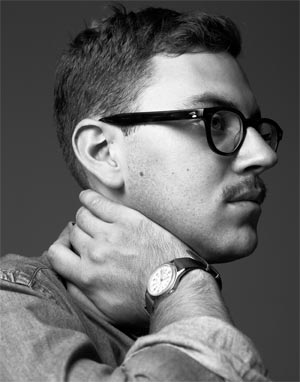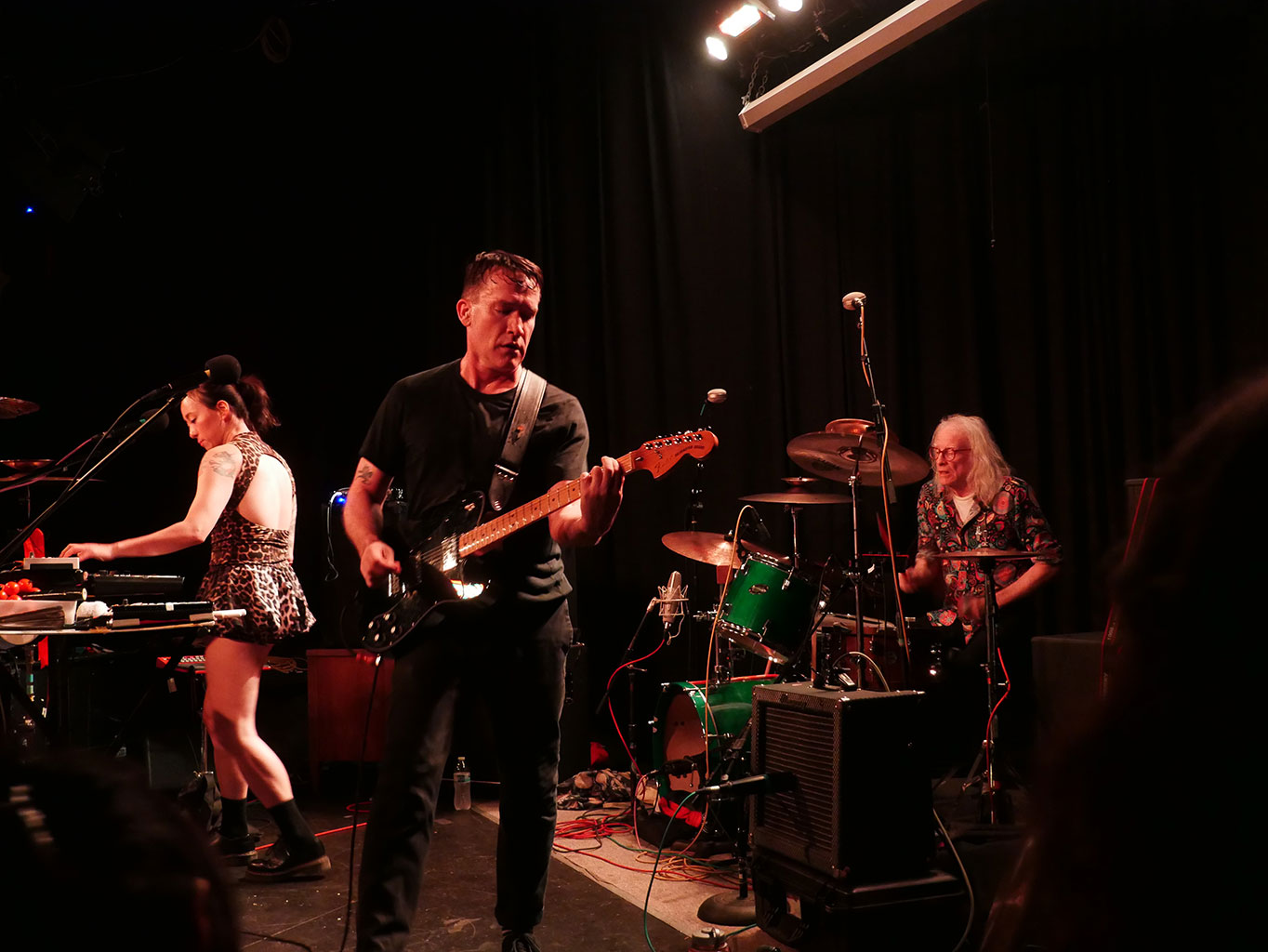
Each track on Exercises is titled simply with a number and a one-word description, leaving listeners with the sense that the collection is one of experiments. Visually-evocative and conceptually-rich, Exercises sees Silver connecting his electronic roots wiht a desire to pay homage to musicians like Ryuichi Sakamoto and David Sylvian.
This interview explores Exercises track-by-track, with insight from CFCF and a complete album stream. Where it is applicable, we have paired the tracks from Exercises with a supplementary influence. We begin with “A Flower Is Not A Flower,” from composer Ryuichi Sakamoto’s Playing The Piano, the album CFCF credits for sparking his initial interest in this project.
Listening Station
Exercises Full Album Stream
Track-By-Track Conceptual Analysis
Exercise #1 (Entry)
This marks a beginning, an entrance of sorts to the Exercises album. What got you interested in doing this more structured and piano-driven piece considering so much of your music is electronic-based?
It began because I became addicted to Ryuichi Sakamoto’s Playing the Piano. It was the soundtrack to my fall and winter, in late 2010 I guess. And from there it went to Chopin’s Nocturnes and Glenn Gould and Philip Glass and some of David Borden’s piano counterpoint pieces. So I decided to make a version of a track from my EP The River, “It Was Never Meant To Be This Way”, that was mainly piano with some kind of reverb-drenched, non-lyrical vocals over it — moaning I guess. And I cut together some footage from David Cronenberg’s Stereo over it, and then it kind of became clear that this was something I wanted to explore a bit further and build a world [out] of. The piano patterns and the harsh lines of the brutalist architecture, and with the songs, [they] kind of fill in some kind of drama.
CFCF’s “It Was Never Meant To Be This Way (Piano Version)”
Exercise #2 (School)
A much brighter and more vibrant track than most of the album, does “School” reflect a more innocent and playful time in your life or career as a musician?
It does remind me of some of the earlier things from when I started making music. This track was made very quickly. I guess I wanted to make some kind of very simple patterns and work with these kind of sprouting synth leads that come from either channel. It’s in kind of an odd time signature, like 9/4 or something. It’s definitely quite bright.
Glenn Gould’s Variations 1-7
Exercise #3 (Buildings)
Structure and buildings are commonplace objects most people look past and take for granted. Did you make this album as a self-challenge in limitation and structure — or did it not feel that way at all?
Yes, I made a conscious effort to dial back my impulses as far as building tracks upon tracks, and to work from a simple melodic basis that usually started with piano. Generally when I work on music I start with either synths or drums — it depends on what I’m going for. But since I was going for something stripped down I was kind of working with melodic patterns, building melodies on melodies in ways that weren’t necessarily grandiose. This track is probably the most obviously pattern-based; it’s mainly a set of cycles that build on one another, with some pads and melodies that offer an emotional core.
Stream “Exercise #3 (Building)”
Exercise #4 (Spirit)
Exercises has its own spirit — or life arc, so to speak. Even though each song has its own message or theme, do you see the album as a collection of different ideas or a single idea expounded throughout 8 vignettes?
It didn’t really start out as a unified concept — I was just working in a style that eventually grew into this. I actually think a lot of the tracks are sonically quite different. There’s a unified theme and style, but it shifts from song to song. This track was the last to be recorded, some 10 months after the first 6 original tracks. It’s just DX7 and some sampled panflute, a bit of piano. Different in its parts than the rest of the tracks, but very improvisational. This was inspired by Talk Talk’s “Wealth,” the closer on their [album] Spirit of Eden, hence the title.
Talk Talk’s “Wealth”
Exercise #5 (September)
There’s no denying that music and seasons have a strong connection. Whether when recording an album or in my case, listening to an album, the time of year plays a huge role in how art is interpreted. Was there a correlation in the changing of the seasons that prompted the use of vocals on September?
It was definitely September when I recorded this — and I was listening to David Sylvian’s Secrets of the Beehive, of whose opening track this is a semi-cover. I can’t really say why this track became what it is — or how it even really fits in with everything else. It’s obviously the most fully-realized of them, [with] basslines, synth leads, pads, 2-step drums, vocals, even samples. This I guess is more in line with my usual way of working. I think because it was getting to be a bit weighed down by ‘songness,’ I wanted some lyrical cue as far as what the song actually was, and those lyrics were inspiring me at the time.
David Sylvian’s “September” From Secrets Of The Beehive
Exercise #6 (December)
The track is incredibly sparse and minimal compared to the rest of Exercises; is there a connection between the dark winter months and “Exercise #6”?
This was the second to last track added — recorded in December 2011, a year after the first batch of tracks were written. It’s something that happens when you’re releasing records; so much time passes between the original recordings and the actual movement of releasing things, getting things mastered and finalized. So at the last minute there’s a lot of room for change. You can add things at the last minute, and I’d just recorded this and loved how it really evoked a kind of lost winter feeling — the bell-synths are a bed of snow — and I think there are moments of tenderness, confusion, elation.
Exercise #7 (Loss)
Whether it’s a person or a sensation or a memory, loss has been one of the main reasons for music as far back as recorded history goes. The track itself is a dark and desperate-sounding affair in comparison. What has loss meant to you and did it play into the album?
I suppose it’s a precursor to change really — I haven’t experienced huge losses in my life, but things are always changing, and you lose things, touch with people, memories etc. Everything you lose you can either try to recreate and get back or just let go and start anew.
Exercise #8 (Change)
Change is often a concept or theme that is embedded partway throughout an album. This track takes on many faces — as does this album in general — what is the intention behind this sequencing and the sudden cut-off for a song that, in its title and sonics, has such implications for an unknown future?
It’s a big shift from the 7 tracks that precede it; it’s entirely electronic, no piano or organic sounds to anchor it. It’s forward-looking. There is cavernous space in the reverb, room for growth and room to build, as the layering synths near the end do and then suddenly drop off. It’s a leap, a sudden sharp drop, into the unknown.
A Sampling of CFCF’s more electronic tracks, from Cometrue
Download CFCF’s “Do U Like Night Bus?” Mix Download CFCF’s “Reincarnation” Mix
Q&A
Is music-making a visually-evocative process for you? If so, how pronounced is that relationship? For particularly visually-evocative tracks, do the tracks ever transform significantly during the creative process?
It’s definitely something I usually have in mind. But it starts off very vaguely, I’m trying to express something kind of vague that only really develops as the song itself is growing. Once a song is nearing completion, it starts to become clearer what the visual element is that I’m trying to evoke, and then it’s up to me to try to get that out the best I can.
Do you believe the emotionally-evocative nature of such music to be fairly universal? Is successfully conveying to the listener the message you originally intended the mark of a successful product, or is it par for the course that, like in visual art, interpretations will vary vastly?
I think if I can get the listener to see what I saw while I was making a song, and maybe conjure up that imagery and have them relate it to their experience, then I’m successful. [Differences are] definitely… bound to happen — all of our experiences differ in some way so the way we perceive and translate sounds into images and emotions varies from person to person. I mean I guess as long as the listener gains some pleasure, and feels something and is taken somewhere, then I feel like I am successful.
Was there ever a thought that you would simply leave the song titles on Exercises numbered and not supplement them with additional words?
Well originally it was only numbered titles, and there were six tracks. But once I started to add more songs and rearrange the tracks it started to become confusing which ones were which. And there was already such a visual element to it as far as the inspiration and artwork, I thought it wouldn’t hurt to give a little nudge as far as helping the listener along with some sort of basis of ideas.
Are there similar forays into classical music or other new territories that you are curious to explore in the future?
I’m working on some other projects that are more pop-oriented. Adult pop, specifically. One project is very singer-songwritery, with vocals and drum machines and fretless basses. The other is a kind of commercial new age project. It’s like hold music, or music for a tv infomercial. Tropical PBS interstitial music.
Ω






